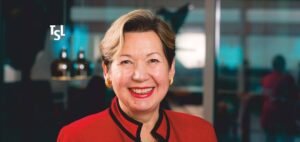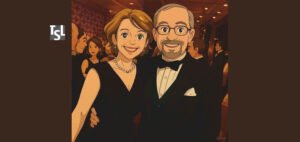Dr.Richard Larson’s journey is a compelling testament to the idea that learning is not bound by time, place, or age—it is a lifelong pursuit. As a renowned researcher, educator, innovator, and thought leader, Richard Larson has consistently extended the frontiers of knowledge while translating abstract theories into real world applications. His contributions span across disciplines like queueing theory, operations research, education reform, and public decision-making, making him a pioneer in more ways than one.
More than an academic, Richard Larson’s life has been a dynamic blend of intellectual rigor and humanitarian commitment. Whether crafting complex mathematical models or developing educational platforms that democratize learning, he has exemplified how science and empathy can co-exist. Central to his story is not just individual achievement, but a belief in collective growth—of ideas, students, communities, and societies.
His legacy is as personal as it is professional. Deeply inspired and supported by his late wife, Mary Elizabeth Murray (“Liz”), Larson’s work has always had a human dimension. The narrative of his life is one that encourages aspiring scholars and educators to not only innovate but also care, mentor, and uplift. What follows is a chronicle of that extraordinary journey.
A Fortunate Beginning at MIT
Dr.Richard Larson attributes much of his career foundation to a serendipitous beginning—his admission to the Massachusetts Institute of Technology (MIT) at age 18 after completing high school in Needham, Massachusetts. While his father initially hoped he would commute to save money, Larson’s acceptance into Phi Beta Epsilon fraternity changed his trajectory. Situated on Memorial Drive, right on MIT’s campus, the fraternity gave him a vibrant and supportive community that deeply enriched his student experience.
At MIT, his appetite for knowledge grew exponentially. He pursued graduate studies with fervor and eventually earned his Ph.D. in Operations Research. Toward the completion of his dissertation, Professor Alvin W. Drake, his faculty advisor, offered him an assistant professorship—a proposal that surprised Richard Larson, given how recently he had been a student himself. Nevertheless, he accepted, and over time rose through the academic ranks, becoming a tenured professor and an influential voice in the field.
His decision to stay at MIT was more than a career move; it was a commitment to an intellectual culture that valued curiosity, rigor, and impact. For RichardLarson, MIT wasn’t just a workplace—it was a community of thinkers and doers that continually challenged him to evolve.
The Classroom: A Lab for Minds
While research was integral to his identity, Richard Larson found his greatest joy in teaching. His connection with students, both in lectures and research advisories, was a driving force in his academic life. Richard Larson often emphasizes that while classroom teaching was fulfilling, it was the deep, sustained academic relationships through mentoring that gave him the most satisfaction.
Under his guidance, many students pushed the boundaries of conventional thinking, resulting in influential academic publications and real-world innovations. Richard Larson didn’t merely see himself as a teacher—he saw himself as a cultivator of minds, committed to fostering curiosity, critical thinking, and intellectual resilience.
He speaks passionately about the joy of watching students evolve into leaders in academia, industry, and public service. For Richard Larson, each student’s success was a reflection of what education can truly accomplish when approached with sincerity, discipline, and creativity.
A Model Approach to Decision-Making
After retiring from classroom teaching, Dr.Richard Larson redirected his energy toward public education and intellectual outreach. His recent work, particularly his book MODEL THINKING For Everyday Life, focuses on making complex academic concepts accessible to a general audience. This shift reflects his long-standing belief that structured, model-based thinking is critical not only in science but also in daily decision-making.
He defines models as frameworks—mental or mathematical—that help simplify complex problems and guide better decisions. From navigating personal finances to optimizing emergency response systems, his work illustrates the practical power of well-designed models. Through workshops, public speaking, and writing, Richard Larson continues to equip individuals with the tools needed to think more logically and critically in a chaotic world.
Learning Beyond the Lab
Richard Larson’s belief in lifelong learning goes well beyond the academic realm. He often invokes the Einsteinian principle that “a day without learning is a day wasted.” For him, learning isn’t merely a professional habit—it’s a way of life. His own experiences include dreaming up solutions to research challenges, such as his Hypercube Queueing Model, which became instrumental in improving emergency response strategies in urban settings.
These episodes underscore his conviction that curiosity doesn’t rest. Whether through literature, technology, or even observing animal behavior, Richard Larson remains constantly engaged in the learning process. His message is clear: knowledge is everywhere, waiting to be uncovered by those willing to look.
Extending Impact Beyond MIT
Larson’s legacy is far from confined to the boundaries of MIT. Over the years, he has championed educational access and reform through various initiatives. One notable contribution is his support of Notre Dame Cristo Rey High School, which serves underprivileged students. For Richard Larson, quality education should not be a privilege of the few but a fundamental right of all.
As part of ensuring the sustainability of his mission, he established the endowed “Larson Chair” in the MIT Institute for Data, Systems, and Society. The chair stands as a permanent investment in future scholars who will push forward the kind of interdisciplinary research that has defined Larson’s career. It’s a tangible representation of his belief that education can shape not just individuals, but entire systems and societies.
Facing and Learning from Setbacks
Despite his many accolades, Dr.Richard Larson’s journey wasn’t without obstacles. Early in his career as a Teaching Assistant, he encountered a humbling moment when he failed to adequately explain an equation on a blackboard. Rather than deter him, the experience motivated Richard Larson to engage in thorough preparation before every class. He turned what could have been a discouraging event into a catalyst for lifelong academic diligence.
Larson often recalls this moment as one that reinforced the value of humility and continuous learning. It reminds us that even the most seasoned educators started as learners—and that every challenge holds a lesson.
A Partnership that Shaped His Legacy
Integral to Richard Larson’s professional journey was his late wife, Mary Elizabeth Murray (“Liz”). Over their 43 years of marriage, Liz was not just a partner in life, but also in purpose. Together, they launched initiatives like MIT BLOSSOMS, which aimed to provide high-quality video lessons for high school students around the world.
Liz served as the program’s manager and was a cornerstone of its global outreach. From addressing audiences in Saudi Arabia to overseeing operations at Richard Larson’s consulting firm, ENFORTH Corp., Liz played a vital role in expanding the impact of their shared vision. Her passing left a deep void in his life, but her influence continues to resonate in every project he undertakes.
Watching the Future Unfold
Though officially retired, Dr.Richard Larson remains deeply attuned to developments in education and research. One of the trends that both excites and concerns him is the rise of Artificial Intelligence. He acknowledges the immense potential of AI to transform fields, including education. Yet, he also warns of its misuse, particularly in student learning where shortcuts could undermine intellectual growth.
Richard Larson advocates for a balanced approach—embracing AI’s benefits while reinforcing the importance of ethical reasoning, critical thinking, and human insight. These, he insists, are the cornerstones of meaningful education that machines cannot replicate.
Guiding the Next Generation
Larson’s advice to young educators and researchers is rooted in authenticity: follow your intellectual passions. He insists that meaningful discoveries often stem from curiosity and courage rather than conformity. His own work—such as the groundbreaking Hypercube Queueing Model and Queue Inference Engine—emerged not from preordained plans but from deep engagement with real world issues.
He encourages scholars to pursue interdisciplinary ideas, engage with societal challenges, and remain intellectually fearless. In doing so, they don’t just become better researchers—they become change-makers.
A Mission That Never Ends
Even without conducting fresh research, Dr.Richard Larson remains an active advocate for intellectual empowerment. Through his writing, especially MODEL THINKING For Everyday Life, he seeks to democratize knowledge and instill a culture of thoughtful decision-making in public life.
He leverages platforms such as TV, radio, and even Times Square billboards to share his message. For him, education is not a confined activity; it’s a public good. As long as people are willing to learn, his mission continues.
A Life of Purpose, Passion, and Principles
Richard Larson’s story is one of continuous evolution, grounded in a fundamental belief in the power of knowledge. From MIT lecture halls to international conferences, from academic publications to public broadcasts, he has dedicated his life to making learning meaningful and accessible.
His legacy is not just in his models or publications, but in the countless minds he’s shaped and the societal systems he’s influenced. For Richard Larson, education is not a profession; it’s a lifelong calling. And in answering that call, he has lit a path that future generations of thinkers, teachers, and dreamers can follow.


